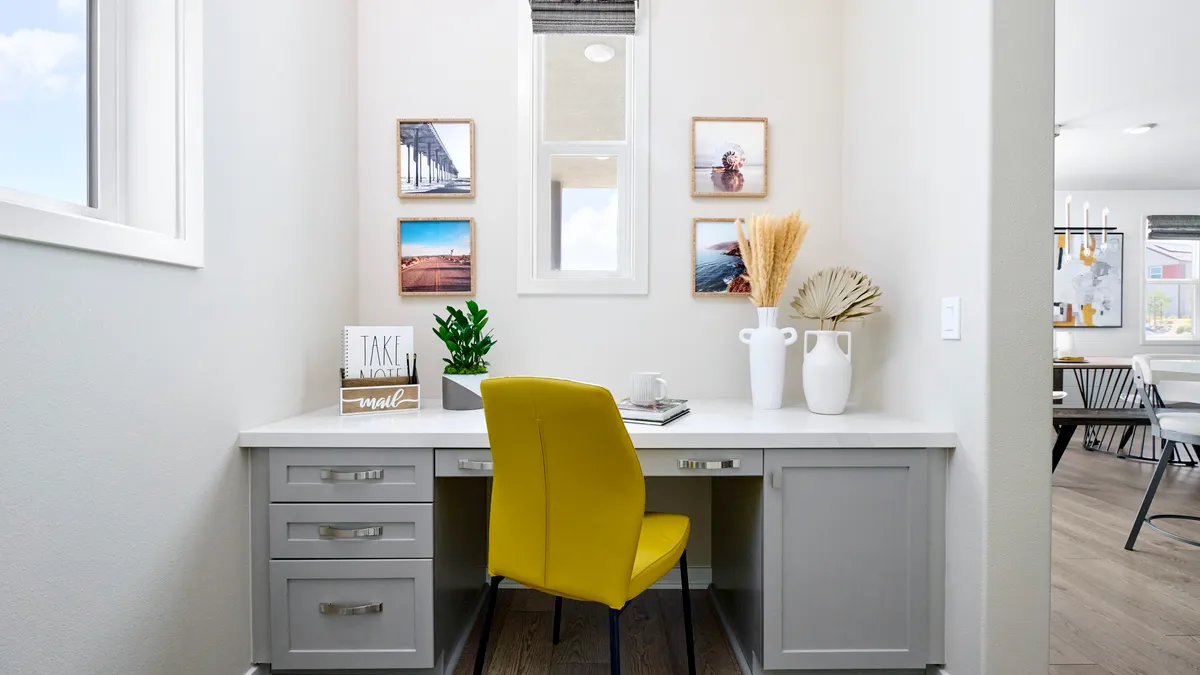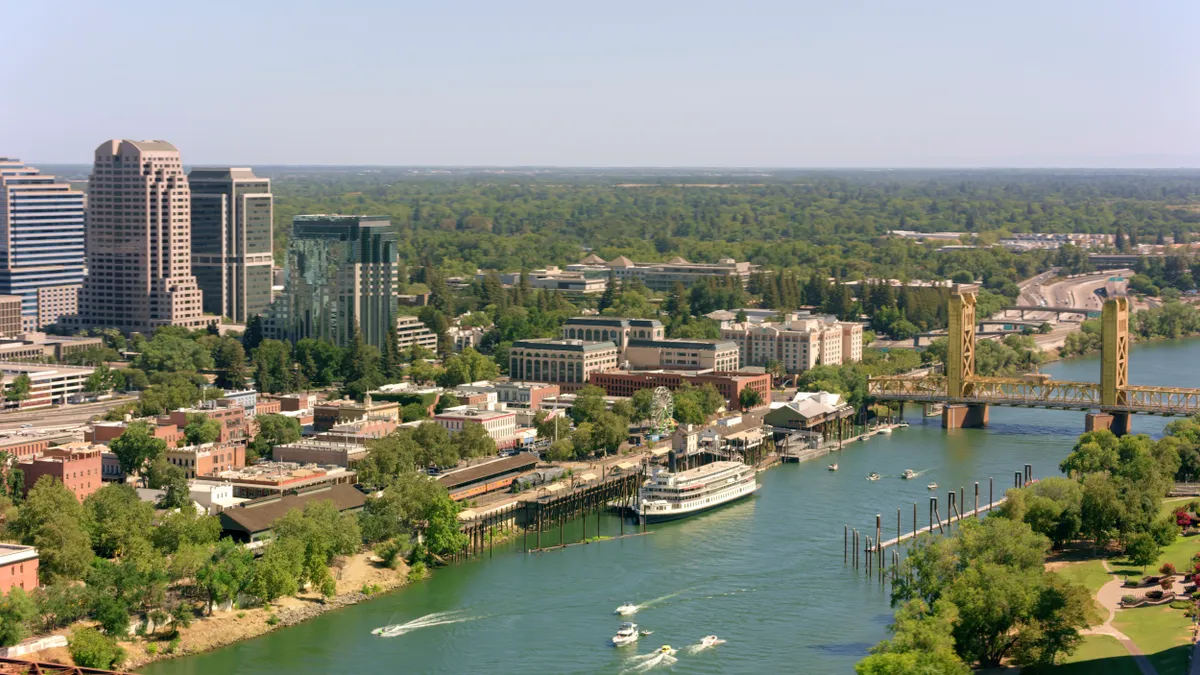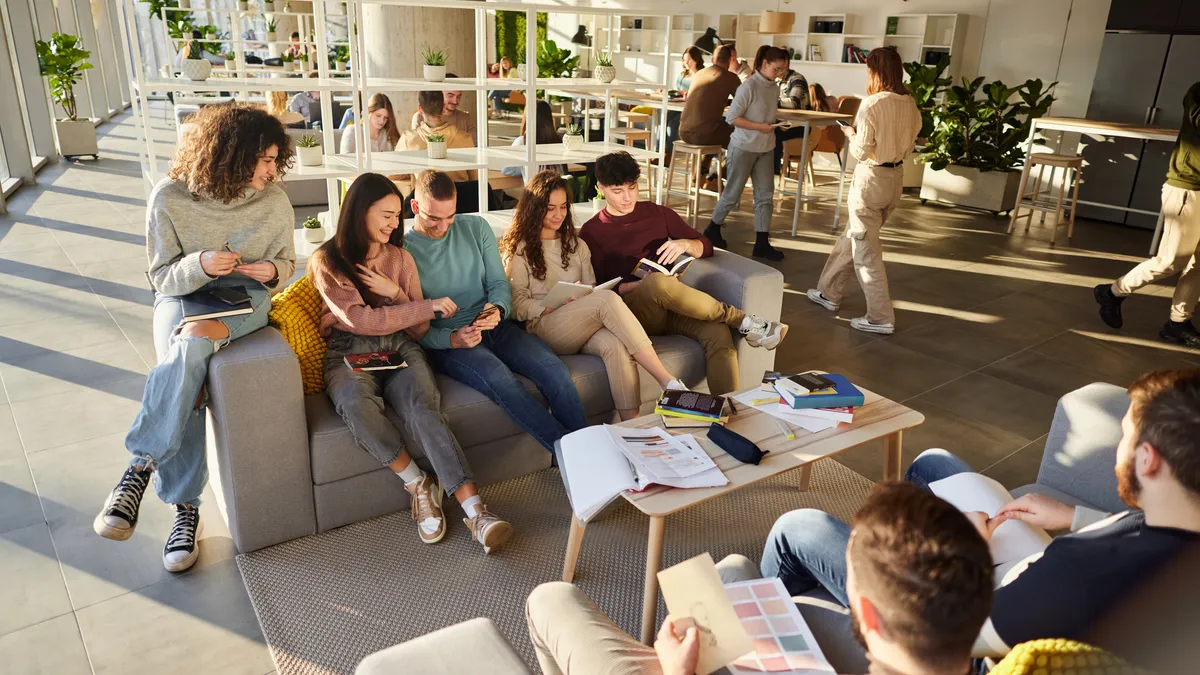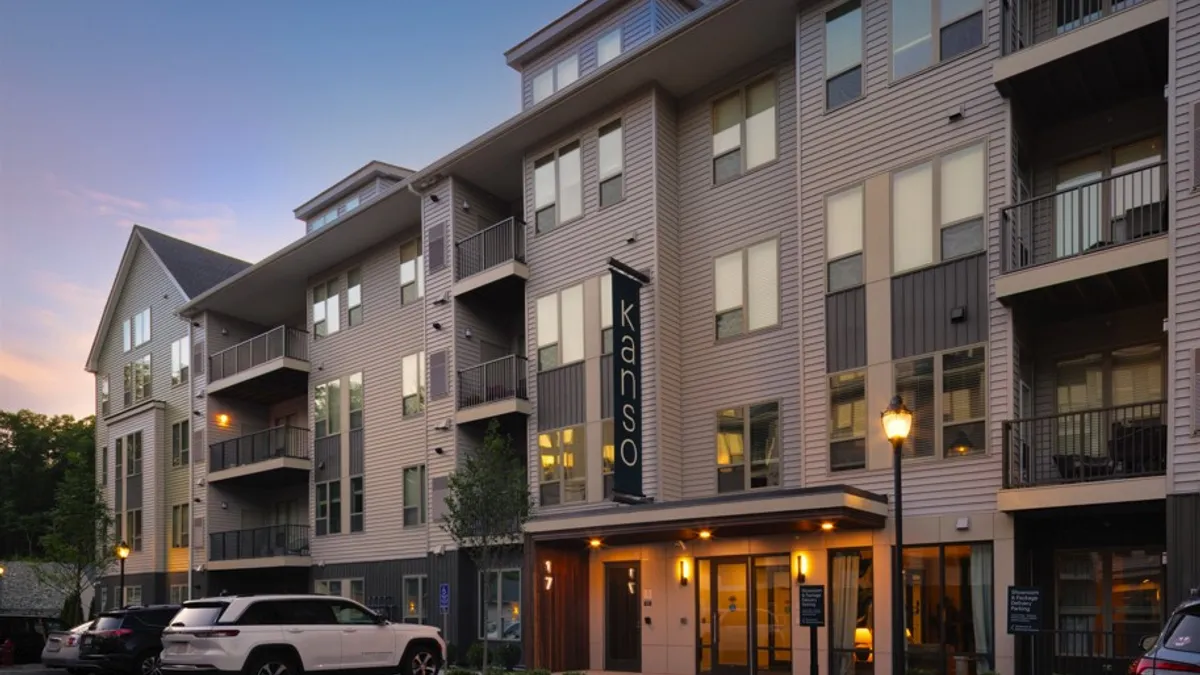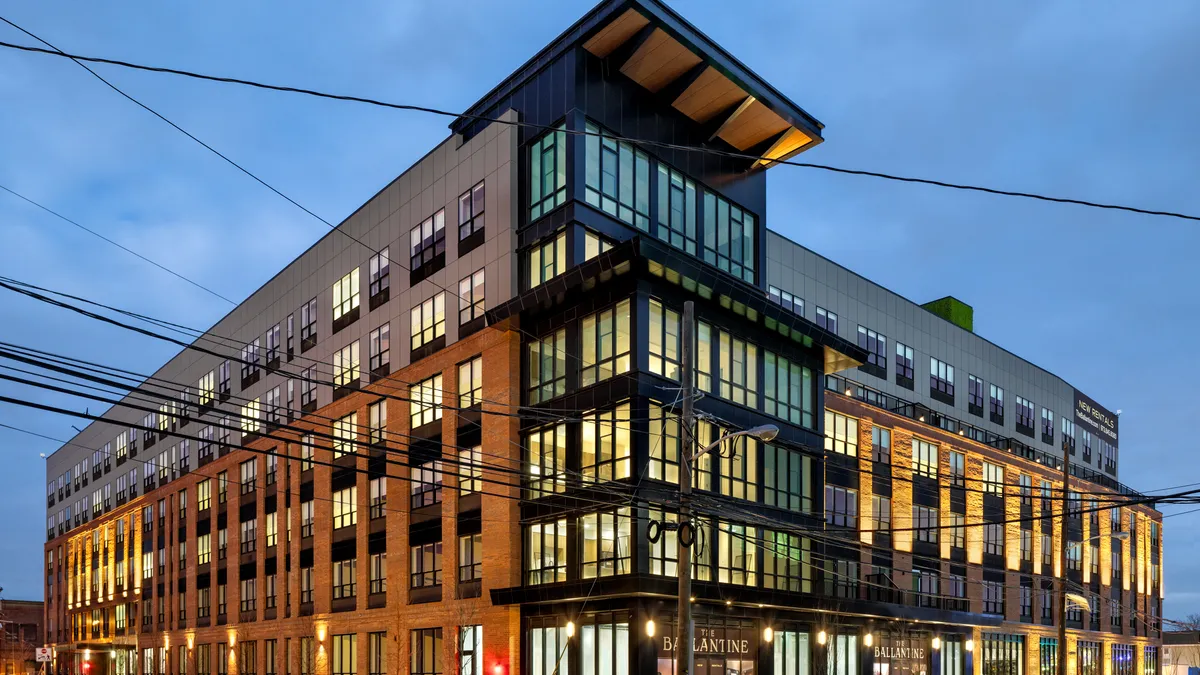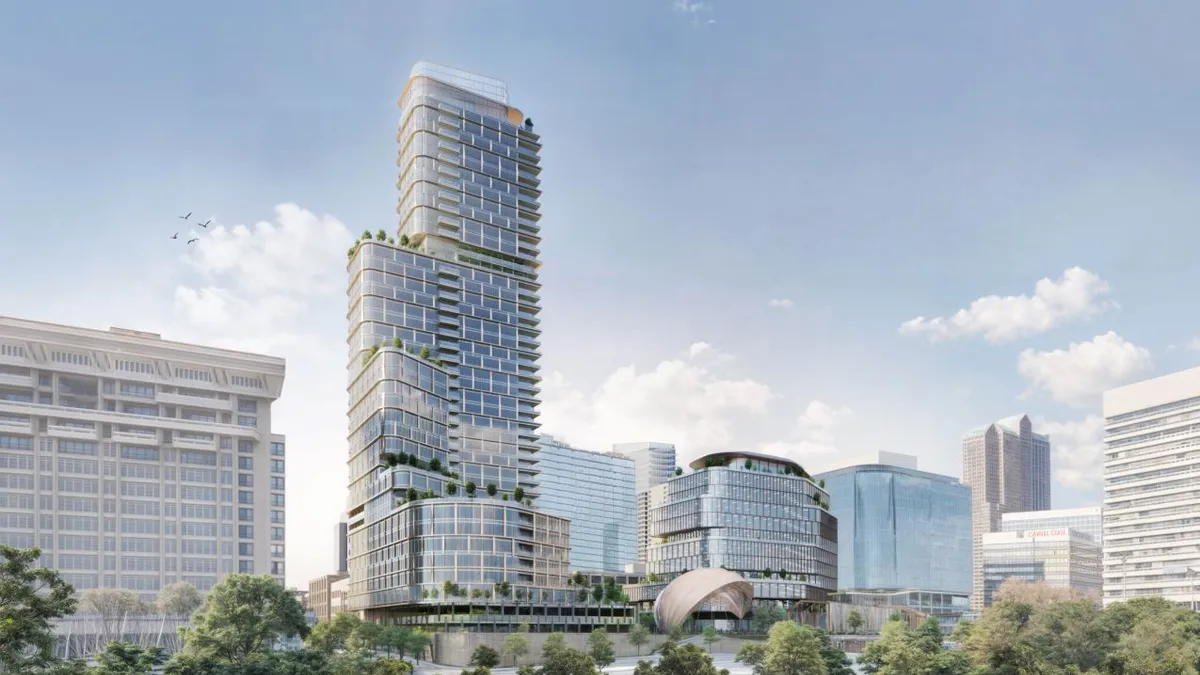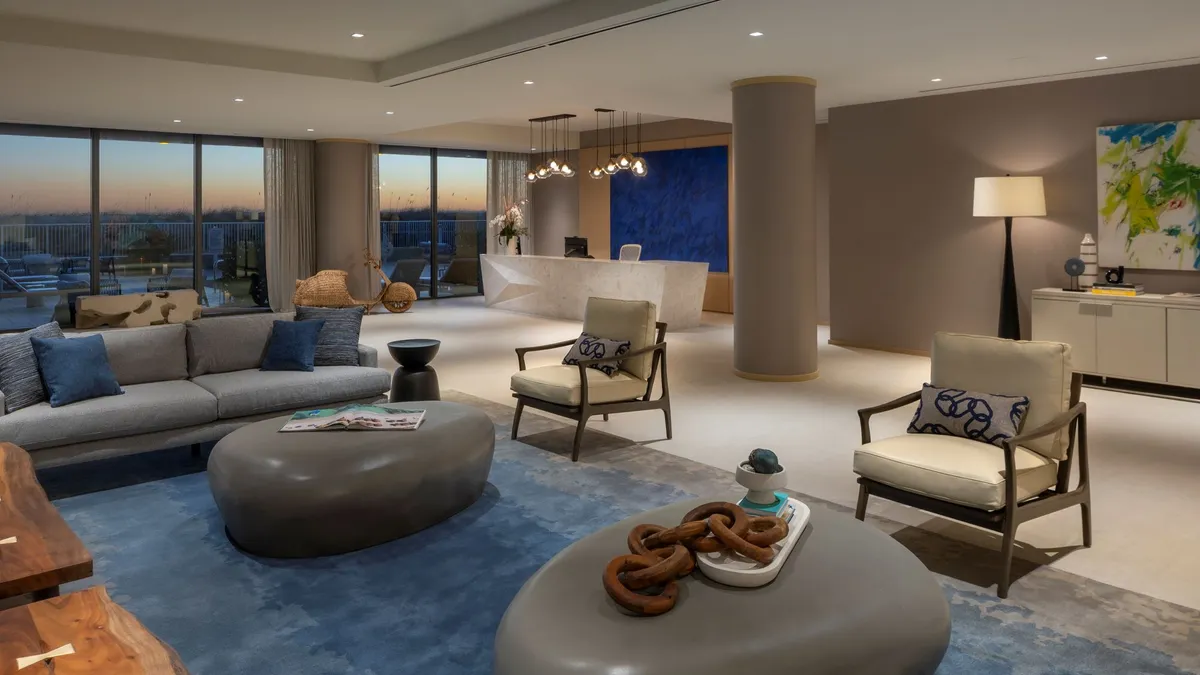A common adage goes, “all real estate is local,” but some trends in multifamily design can hit the entire nation at once — such as the changes in renter preferences brought on by the COVID-19 pandemic. Others can depend heavily on styles particular to a certain region, or on local ordinances.
Bryan Sevy, the newest principal at KTGY, has seen this evolution over the course of his 20-plus years at the Irvine, California-based architecture and planning firm, which he joined as a project designer in 2002.
“I’ve seen Southern California become a much denser place to live as residential typologies have shifted to higher density and mixed-use developments,” said Sevy, who was previously an assistant principal. “There’s a push to make neighborhoods a lot more walkable and we are creating more communities that emphasize active mobility.”
Here, Sevy talks with Multifamily Dive about the changing face of multifamily, work-from-home accommodations and the design strategies that facilitate density.
This interview has been edited for brevity and clarity.
MULTIFAMILY DIVE: What are some of the design trends you see for multifamily projects in 2023?

BRYAN SEVY: With interest rates fluctuating, people are changing their expectations about detached single-family housing, and we’re seeing more interest in denser developments like townhomes, stacked flats and small lot developments. There is also a strong multifamily rental market that keeps us busy – keeps us innovating.
Also, to speak a little more on density and walkability: if you’re in an urban neighborhood, you’re trying to enhance and preserve the urban fabric. You want to enhance connections that are already there. The amenities, the open space, the organization — it’s all important. But in some neighborhoods, the best amenity is the neighborhood.
If you’re somewhere more suburban, your task is placemaking — creating an interesting environment that people want to be in. Sometimes you don’t have much of an urban fabric to work with and you’re trying to create a fabric — a reason to be there. You always want to add to the community, but you have to understand the context.
What are some of the multifamily projects you’re working on currently?
There’s a big focus on smaller units due to the higher cost of housing. I’m seeing a push toward smaller homes as one way to make housing more attainable. There’s new legislation in California that makes it easier to build accessory dwelling units, so we have a few projects incorporating some unique accessible dwelling units.
We are in plan check right now on an apartment community in San Luis Obispo, California, that incorporates a handful of 300-square-foot ADUs. These units create a more attainable housing option.
Where people live and how they live is a little different now, there’s a long-term acknowledgment of working from home that didn’t exist before, and this comes into our high- and low-density projects. We’re making a conscious effort together with our clients to incorporate work-from-home spaces that reflect the new ways people are using their homes.
An example is the Calla Townhomes in Valencia, California. We designed a small pocket office in some of the plans that have space for a desk with a window view and an optional door for privacy during video calls. Some of our multifamily for-rent community designs include kitchen islands that can double as a work-from-home desk.
Design trends come and go on a regional basis. As KTGY is a national firm, how do you account for that in your projects?
One of our strengths as a company is our ability to share ideas and collaborate across offices. Each office has specialists developing different ideas in different regions that address the specific challenges they’re facing. The solutions we come up with to address those often very specific challenges influence designs in the other offices.
The collaborative culture we foster lets ideas spread faster. A designer on the West Coast may see something very interesting in what was originally developed to address a very specific problem in a different part of the country.
We’re not just a nationwide firm, we’re a nationwide firm of specialized offices, studios and individuals that work together on a national scale. A big part of how we address changing trends is by leveraging our expertise across those markets. While we understand the specifics of different jurisdictions, how to get things approved and differing demographic needs from region to region, all the national and international trends have to come from somewhere.



